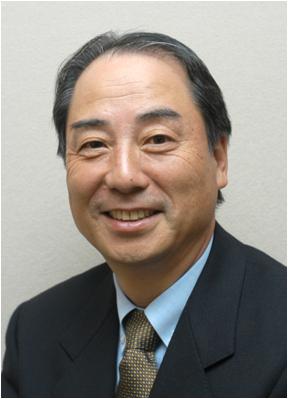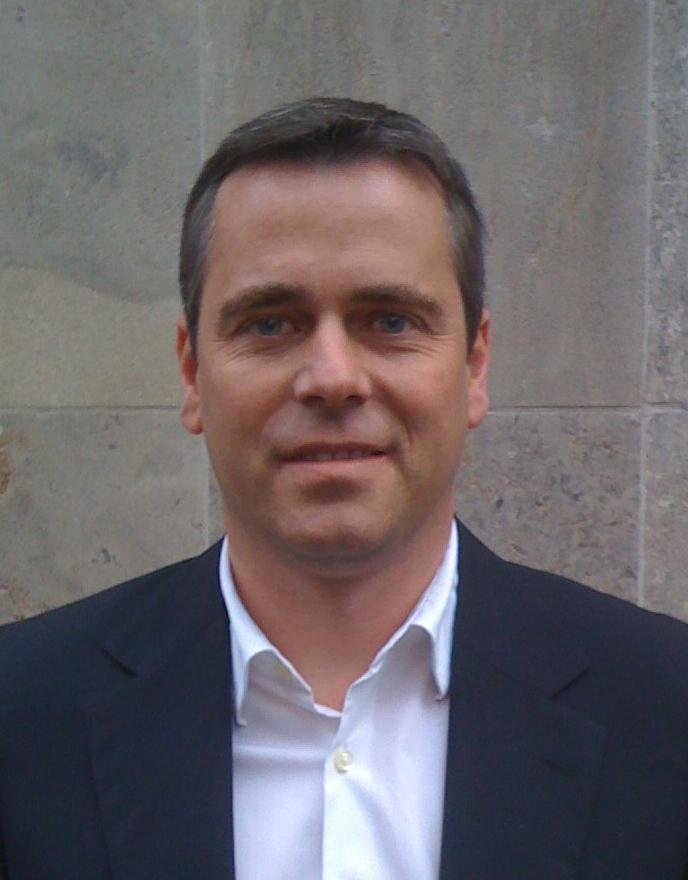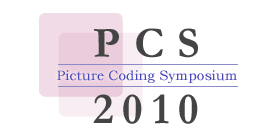Keynote
Wednesday, 8 December:Research and Activities on Ultra-realistic Communications, by Dr. Kazumasa Enami, National Institute of Information and Communications Technology (NICT), Japan.
Thursday, 9 December:
Decoding Visual Perception from Human Brain Activity, by Dr. Yukiyasu Kamitani, ATR Computational Neuroscience Laboratories, Japan.
Friday, 10 December:
Advances in Video Compression, by Prof. Thomas Wiegand, Fraunhofer Institute for Telecommunications, Heinrich Hertz Institute, Germany.
Research and Activities on Ultra-realistic Communications
Wednesday, 8 December, 2010

Speaker: Dr. Kazumasa Enami, National Institute of Information and Communications Technology (NICT), Japan
Abstract
Ultra-realistic communications are future means of communicating that provide users with a highly realistic presence. The technologies to achieve these communications are varied and include ultra-high definition/3-dimensional images, reproduction of highly realistic surround sound, and multisensory communication that includes touch and smell.
Japan Broadcasting Corporation (NHK) is developing Ultra-HDTV system, called Super Hi-vision, which has four times the pixels of HDTV both horizontally and vertically. The images can be viewed as close as 0.75 times the height of the screen. At the proximity, the angle of viewing is 100 degrees, which confers an enhanced sense of reality.
National Institute of Information and Communications Technology (NICT) is researching Ultra-realistic communication technologies that provide natural and real information to everybody. Main research subjects are holographic 3D video, super multi-view 3D video without special glasses on and super surround audio systems. We also researching necessary requirements for ultra-realistic systems based on underlying principles of human information processing.
The Ultra-Realistic Communications Forum (URCF) was established on 2007 to ensure efficient industry-academia-government collaboration in research, development, verification experiments, and standardization on ultra-realistic technologies. Especially standardization of FTV (Free-viewpoint TV) is being actively discussed in a working group of URCF.
Ultra-realistic communication systems have quite huge amount of data. For example, the data rate of Super Hi-vision, super multi-view 3D video and electronic holography video is 72Gbps, more than 200Gbps and more than several hundred Tbps respectively. Then efficient video coding algorithms are required for the ultra-realistic communications.
In the Symposium, I will introduce research on ultra-realistic communications, activities of URCF and describe the expectation of new picture coding technology.
Biography
Dr. Enami graduated from the Tokyo Institute of Technology in 1971, and joined NHK in the same year. From 1974 to 2000, he worked for NHK Science and Technical Research Laboratories. He received the Doctor of Engineering degree from the Tokyo Institute of Technology in 1989. He has been engaged in research on video signal processing, parallel computing, and content production technology. He was transferred to the NHK Engineering Administration Department in 2000 and to the Corporate Planning Bureau (Digital Broadcasting Development) in 2002. He has contributed to standardization of digital terrestrial TV broadcasting services for mobile terminals and a standard for a broadcasting system based on home servers. He was appointed Director-General of NHK Science and Technical Research Laboratories in 2004. He retired from NHK in 2006 and is now working for National Institute of Information and Communications Technologies (NICT). At NICT, he is conducting his research project on ultra realistic communication system including 3D-TV as Executive Director of Universal Media Research Center. He is also Director-General of Keihanna Research Laboratories of NICT located in Kyoto.
He is Chairman of Planning and Promotion Committee of Ultra-Realistic Communications Forum, IEEE Fellow and Vice-president of Virtual Reality Society of Japan. He was Vice-president of ITE (The Institute of Image Information and Television Engineers) in 2005 and 2006.
Decoding Visual Perception from Human Brain Activity
Thursday, 9 December, 2010

Speaker: Dr. Yukiyasu Kamitani, ATR Computational Neuroscience Laboratories, Japan
Abstract
In modern neuroscience, brain activity is considered as "codes" that encode mental and behavioral contents. Recent advances in human neuroimaging, in particular functional magnetic resonance imaging (fMRI), have revealed brain regions that appear to encode specific behavior and cognition. Despite the wide-spread use of human neuroimaging in such "functional brain mapping", its potential to read out, or "decode", mental contents from brain activity has not been fully explored.
Mounting evidence from animal neurophysiology has revealed the roles of the early visual cortex in representing visual features such as orientation and motion direction. However, non-invasive neuroimaging methods have been thought to lack the resolution to probe into these putative feature representations in the human brain. In this talk, I present methods for decoding early visual representations from fMRI voxel patterns based on machine learning techniques. I first show how early visual features represented in "subvoxel" neural structures could be decoded from ensemble fMRI responses. Decoding of stimulus features is extended to the method for neural mind-reading, which attempts to predict a person's subjective state using a decoder trained with unambiguous stimulus presentation. We discuss how a multivoxel pattern can represent more information than the sum of individual voxels, and how an effective set of voxels for decoding can be selected from all available voxels. Based on these methods, we have recently proposed a modular decoding approach, in which a wide variety of percepts can be predicted by combining the outputs of multiple modular decoders. I show an example of visual image reconstruction where arbitrary visual images can be accurately reconstructed by the decoding model trained on fMRI responses to several hundred random images. Finally, I discuss potential applications of neural decoding for brain-based communications.
Biography
Head of Department of Neuroinformatics at ATR Computational Neuroscience Laboratories, Kyoto, Japan, and Associate Professor at Nara Institute of Science and Technology (NAIST). He received B.A. in Cognitive Science from University of Tokyo in 1993, M.S. in Philosophy of Science from University of Tokyo in 1995, and Ph.D. in Computation and Neural Systems from California Institute of Technology in 2001. He continued his research in cognitive and computational neuroscience as a research fellow at Beth Israel Deaconess Medical Center (Harvard Medical School), and as a research stuff member at Princeton University. In 2004, he joined ATR Computational Neuroscience Laboratories, where he currently works on neural decoding of human neuroimaging signals. He was named Research Leader in Neural Imaging on the 2005 Scientific American 50.
Advances in Video Compression
Friday, 10 December, 2010

Speaker: Prof. Thomas Wiegand, Fraunhofer-Institute for Telecommunications, Heinrich Hertz Institute, Germany
Abstract:
Recent work in the research and standards community has shown that significant advances are possible in the field of video compression. These gains have been demonstrated in particular for high-resolution video content. The talk will present the new techniques and analyze the reasons for the improvements in coding efficiency. Comparisons against the state-of-the-art will be provided and potential new developments will be discussed.
Biography
Thomas Wiegand is Professor of electrical engineering at the Technical University of Berlin chairing the Image Communication group and is jointly heading the Image Processing department of the Fraunhofer Institute for Telecommunications, Heinrich Hertz Institute, Berlin, Germany. He received the Dipl.-Ing. degree in Electrical Engineering from the Technical University of Hamburg-Harburg, Germany, in 1995 and the Dr.-Ing. degree from the University of Erlangen-Nuremberg, Germany, in 2000. He joined the Heinrich Hertz Institute in 2000 as the head of the Image Communication group in the Image Processing department and remains active in this role.
From 1993 to 1994, he was a Visiting Researcher at Kobe University, Japan. In 1995, he was a Visiting Scholar at the University of California at Santa Barbara, USA. From 1997 to 1998, he was a Visiting Researcher at Stanford University, USA. He served as a consultant to various companies and is currently a member of the technical advisory board of Vidyo, Inc., Hackensack, NJ, USA. Since 1995, he is an active participant in standardization for multimedia with successful submissions to ITU-T VCEG, ISO/IEC MPEG, 3GPP, DVB, and IETF and has assumed various chairmen roles. His research interests include video processing and coding, multimedia transmission, semantic image representation, as well as computer vision and graphics.
